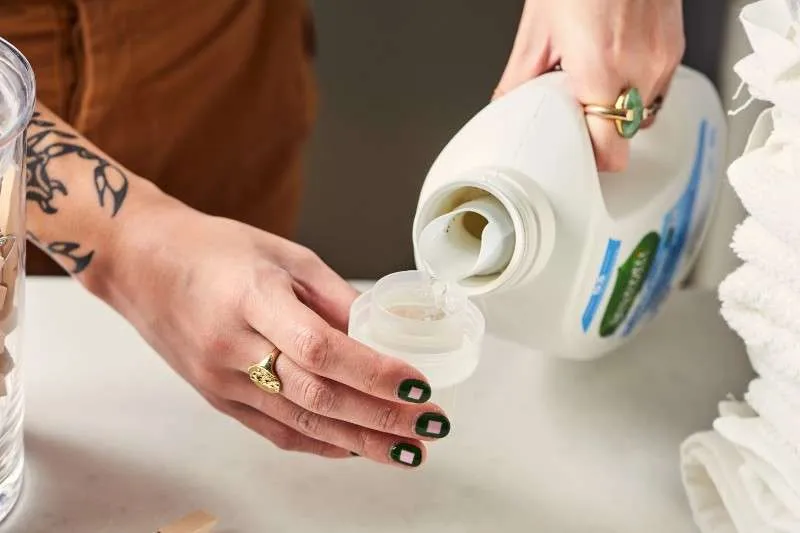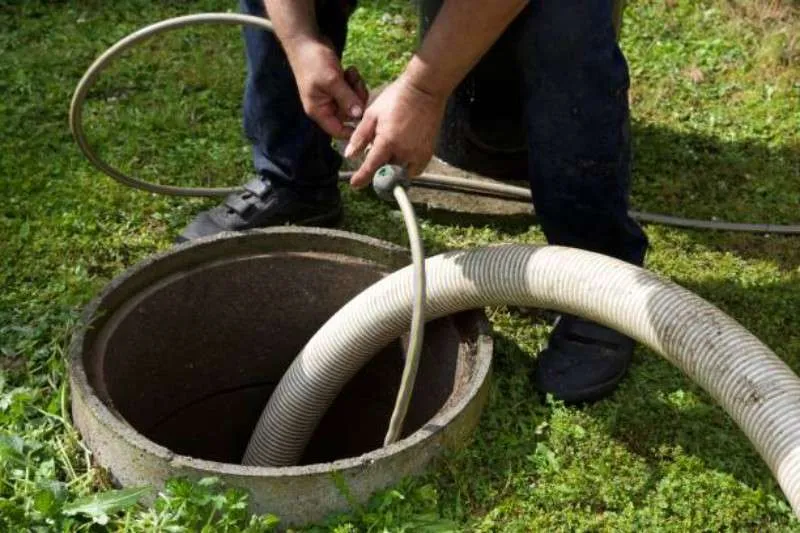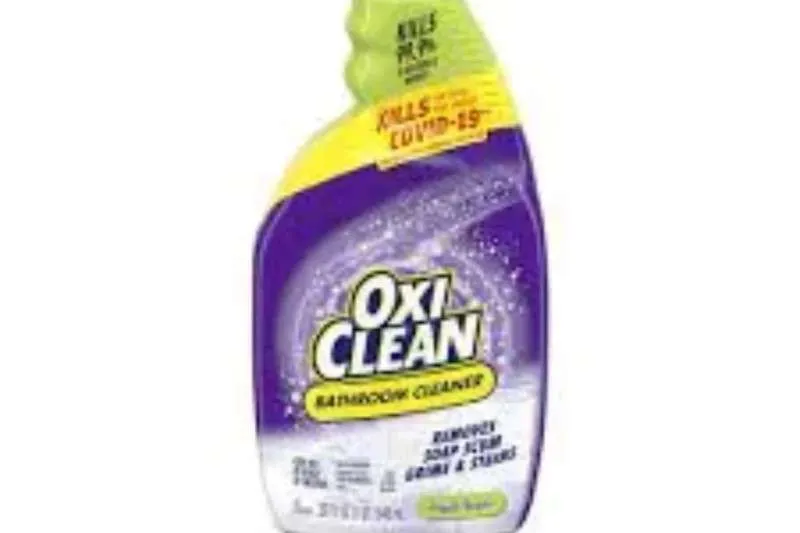Many of us use Oxiclean to clean and remove tough stains from clothes, carpets, and other surfaces around the home. However, when it comes to septic systems, is it safe? We uncover the science behind using Oxiclean on a septic system – its safety, performance, and cost-effectiveness effects. We even consider the environmental impact of using Oxiclean on a septic system so you can decide whether to use it or not.
Introduction to Septic Systems: Basic Overview and Functioning

A septic system is an underground wastewater treatment system that uses bacteria to break down waste and convert it into liquid detergent. It consists of two main components – a tank that collects the wastewater from sinks, toilets, showers, and other sources and an absorption field that disperses the treated water into the soil using perforated pipes.
For a septic system to function properly, it needs healthy bacterial populations in its tank and the surrounding soil. These bacteria consume organic matter (such as food particles) and convert them into harmless compounds that can be safely released into groundwater. Healthy bacteria are paramount for any septic system’s performance; without these organisms, it won’t work efficiently or effectively.
OxiClean White Revive is a laundry detergent powder containing sodium carbonate peroxide, an oxygen-based bleach.
Due to this, many septic system owners are very cautious of what they put down the drain, as anything that kills bacteria can disrupt performance and cause costly damage. Garbage disposals are one of the most common culprits for septic system damage.
What is Oxiclean: A Brief Introduction to the Product

Oxiclean has been a popular powdered laundry detergent and stain remover since 1997. It is a powdered oxygen chlorine bleach, which releases oxygen molecules when mixed with water to help dissolve dirt and stains. It has become increasingly popular due to its highly effective cleaning power, which works on almost any type of fabric or surface.
However, many septic system owners are concerned about using Oxiclean in their drains, fearing it will kill off beneficial bacteria.
Can Oxiclean be Used in Septic Systems? What the Manufacturer Claims
According to Oxiclean’s manufacturer, Church and Dwight Co, the product is safe in septic systems. They state that it breaks down quickly within a few hours once it enters the tank, making it safe for bacteria populations. They claim that Oxiclean can help clean and maintain healthy tanks by removing grease and other organic matter that can build up over time.
Despite these claims, there are still some doubts about whether using Oxiclean on a septic system is beneficial. We separate fact from fiction by examining scientific studies relating to using Oxiclean on septic systems.
The Risks of Using Harsh Chemicals in Septic Systems
Many experts agree that harsh chemicals in septic systems are associated with some risks. These include the potential for killing off beneficial bacteria, which can lead to an inefficient breakdown of waste and sludge buildup. This can cause pipe blockages and potentially damage the tank or absorption field, resulting in costly repairs or replacement.
Using chemical cleaners can also damage the environment as large amounts of these compounds can leach into groundwater when not effectively treated by bacteria populations. This may result in elevated contaminants entering rivers and other bodies of water, which can be dangerous for wildlife and humans who rely on them.
Ingredients in Oxiclean: Are They Safe for Septic Systems?
Oxiclean is made up of several different active ingredients, including sodium carbonate (a natural cleaning agent), sodium percarbonate (an oxygen-based bleach), and sulfamic acid (used to remove stains). While these are generally considered safe for a septic system, there have been some reports of problems when using Oxiclean in certain circumstances.
For instance, if too much Oxiclean is used at once, it can overwhelm bacteria populations and cause them to die off. In addition, if the product comes into contact with rubber seals or other parts of the septic system, it can cause corrosion or damage. Therefore, it is important to follow the manufacturer’s instructions carefully and monitor the tank regularly to ensure everything is functioning properly.
Septic systems should also be well maintained to ensure they are functioning at optimal levels, which includes regularly pumping the tank and inspecting it for any signs of damage or sludge buildup.
Alternatives to Oxiclean: Other Safe Cleaning Products for Septic Systems
Fortunately, other options exist for those looking for a safe and effective cleaner for their septic system. Bacterial additives or enzymes can help break down matter in the tank, while alternatives such as baking soda or lemon juice can also remove stubborn stains.
These products can safely clean and maintain a septic system without posing any risk of killing off beneficial bacteria populations. They may also be more cost-effective than buying chemical cleaners such as Oxiclean, which must be replaced regularly.
Keeping your septic system clean and well-maintained is important if you want it to work properly and avoid costly repairs due to blockages or damage caused by ill bacteria. While Oxiclean may be effective in some cases, weighing up the risks and considering other safer alternatives before using this product on your septic system is important.
The most important thing to remember when cleaning a septic system is that prevention is better than cure. Regular maintenance and inspections can help you avoid any costly problems in the future and will ensure your septic system continues working at optimal levels for years to come.
Best Practices for Maintaining Septic Systems: Tips for Keeping Your System Healthy
Regular maintenance is essential for keeping your septic system in good condition. Here are some tips for ensuring your system remains healthy:
- Pump the tank every 3 to 5 years or when sludge buildup is detected.
- Inspect and repair pipes regularly, looking for any signs of damage or blockages.
- Avoid flushing items that can cause a clog, including coffee grounds, wet wipes, paper towels, and other non-biodegradable materials.
- Replace old septic tanks with more efficient models if needed.
- Use only approved cleaners in your system, such as bacterial additives or natural products like baking soda ash and lemon juice.
- Keep tree roots away from the drain field.
- Install a filter in your septic tank and sump pump to prevent solids from entering the drain fields.
Following these tips will help ensure your system runs smoothly for years and reduce the need for costly repairs or replacements. Keeping your septic system clean and well-maintained is one of the best ways to ensure it works optimally. Hydrogen peroxide is another potential cleaner for septic systems that can be used in small amounts.
FAQS
Can you put OxiClean down the drain?
OxiClean can be put down the drain if it is used following the manufacturer’s instructions. However, if too much of the product is used at once, it may overwhelm bacteria populations, causing them to die off. It is, therefore, important to follow instructions carefully and monitor the tank regularly when using this product.
Is Arm and Hammer with OxiClean safe for septic systems?
Arm and Hammer with OxiClean are generally safe for septic systems, although it may be more effective to use natural alternatives such as baking soda or lemon juice. It is important to follow the manufacturer’s instructions carefully when using any product in a septic system.
When should you not use OxiClean?
OxiClean should not be used in a septic system when there is an active sludge buildup or if the system is already damaged. It may also not be effective at removing certain stains, such as oil-based ones, and could potentially do more harm than good. In these cases, it is best to use natural alternatives such as baking soda or lemon juice.
What cleaning products are OK for septic tanks?
Many cleaning products can be used safely in septic tanks, including natural alternatives such as baking soda, vinegar, and lemon juice. Bacterial additives are available on the market, which can help keep your system healthy without causing any damage to beneficial bacteria populations.
What can I use to whiten my clothes with a septic tank?
Many natural alternatives, such as baking soda and lemon juice, can be used to whiten clothing with a septic tank. These products are safe for septic systems and more cost-effective and environmentally friendly than chemical bleaches.
Can you use any laundry detergent with a septic system?
Not all laundry detergents are suitable for use with a septic system. It is important to check the label of any product you intend to use and ensure it is specifically designed for use in septic systems. Products that contain enzymes or bleach should be avoided, as these can damage the beneficial bacteria populations in your tank.
Is Dawn dish soap safe for septic?
Dawn dish soap is generally considered safe for septic systems as long as it is used in moderation. It is important to avoid using too much of the product at once, as this can overwhelm bacteria populations and cause them to die off. As with any product, following the manufacturer’s instructions carefully when using Dawn dish soap in a septic system is best.
Can you use bleach in your laundry if you have a septic system?
Using bleach in a septic system is not recommended, as it can harm beneficial bacteria that help break down waste. Instead, consider using natural alternatives such as baking soda or lemon juice for whitening clothes. If you must use bleach, dilute it and use it sparingly.
Conclusion
As we can see, when used in the correct way and with the right precautions, OxiClean poses no real risk to your septic system. When considering your options for cleaning products, remember that Oxiclean is safe to use as an occasional supplement in conjunction with septic-safe detergents; it cannot be used as a replacement. To be accurate and up to date on similar topics, always contact your plumbing contractor or waste management experts for more technical information and product recommendations.


